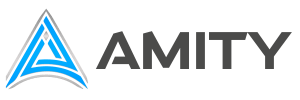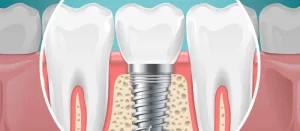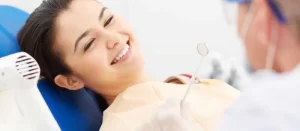On November 4th , 2019, Jonathan Sanderson and Hesham Sherghin, Dentists and co-owners of Ilderton Family Dental received news from the Municipality of Middlesex that they will not grant a permit to expand their existing dental office. The proposed office expansion falls within proximity of a road widening allowance on the office property. The owners were hoping to expand the office space and add three to four operatories (chairs) to help meet the growing patient demand. Both owners recognized that expanding or relocating the office may take years and need to find alternative solutions to optimize the office in order to continue production growth along with servicing their growing patient base.
Ilderton, Ontario, located a few minutes North of London, Ontario and half-way between Lake Erie and Lake Huron, Ilderton is home to over 3,500 residents. This is due to the demand for affordable living space close to the city, yet far enough away to still maintain a village feel. The town has become a very desirable place to live and continues to experience rapid growth. Most homes are a few steps away from the rolling countryside, providing enjoyable walks and cycle rides. The only dental office in town, Ilderton Family Dental was founded by the late Dr. Richard Merritt in 2005. Hesham Sherghin Joined the four operatory practice in 2012 and purchased it in 2014. In 2016, Jonathan Sanderson, a new graduate from Schulich School of Dentistry joined the practice as an associate dentist. He purchased 50% shares of the business the following year. The practice has experienced a tremendous amount of growth year over year. Such growth resulted in the addition of a part-time dental associate (Dr.Pouya Maleki) in 2019. The office currently employs five hygienists (2 full time and 3 part time), three dental assistants (2 full time and 1 part time), two front desk receptionists (1 full time and 1 part time) and an office manager (full time). Currently, a minimum of two chairs are dedicated to Hygiene procedures each day. Though ideally the dentist would prefer to work out of two chairs, they understand that they may be limited to working out of one on any given day.
Informing the staff of the recent news from the municipality, Hesham and Jonathan proposed extending weekday hours and opening a few weekends to help accommodate the patient demand. In the past, the staff had strongly opposed working earlier then 8am and past 7pm Monday to Thursday, and no later than 3:30pm on Fridays and Saturdays. The office is currently open one Saturday per month, and the staff are open to the idea of adding two additional Saturdays per month. All staff members have expressed their desire to work only one Saturday per month. One hygienist (Meagan) is willing to work more than one Saturday per month if possible. Two doctors (Dr. Sanderson and Dr. Maleki) are each available to work one Saturday per month, meaning that the third Saturday will be a hygiene only day. The staff were also very receptive to the idea of bringing in additional staff members from nearby sister offices to help with the extended hours and days. An optimization model will be proposed in order to find the optimal yearly revenue value given four chairs, five weekdays of operation and three Saturdays of operation per month.
Objective:
Our objective is to maximize yearly production (revenue) at Ilderton Family Dental.
Decision:
Decision variables represent the actions that are under our direct control. We need to determine what the best set of decisions are in order to achieve an optimal solution. The decision variables in this case include; the number of individuals to staff during the day. This includes the number of dentists and hygienists working on weekdays (X1, X2) and weekends (X3, X4). All numbers will be positive integer values.
Constraints:
This scenario presents with binding and non-binding constraints. Binding constraints are active constraints that have no slack. A binding constraint for Ilderton family dental is the number of operatories (chairs) available at 4. A few non-binding constraints are present in this case as well. The first is the hours of office operation during the day and the number of days that the office is open during the week. The second, is the number of hours worked per employee per week is capped at 40hours respectively. The number of dentists available to work on Saturday also poses as a non-binding constraint.
Assumption:
A few assumptions will be made to help bring this model to life:
- Usage of a single chair can be divided into two shifts (half chair).
- No more then two dentists can work at any given time
- A minimum of two hygienists are working at any given time
- The practice will be able to hire enough dentists to supply weekday demand
- The practice will avoid overtime hours as they will hire additional full time and part time staff
as required to meet demand - Only two dentists are available to work on Saturday, each able to work once a month
- Integer values (whole numbers) will be selected as we cannot have a fraction of a staff
member. - No negative values will be permitted as we cannot have negative revenue or negative shifts.
Mathematical Model:
Maximize Revenue (R1) = X1 (A1)(B1) + X2(A2)(B2) + X3 (C1)(B1) + X4 (C2)(B2)
X1= Number of Dentists per day (M,T,W,T,F)
X2= Number of Hygienists per day (M,T,W,T,F)
X2 ≥ 3
X3 ≤ 2
X3= Number of Dentist on Saturday
X4= Number of Hygienist on Saturday
X1 + X2 = Number of half chairs (8)
X3 + X4 = Number of Chairs on Saturday per month (12)
A1= Dentist Hours (M,T,W,T,F)
A2= Hygiene Hours (M,T,W,T,F)
B1= Avg. Dentist Production per hour
B2= Avg. Hygiene Production per hour
C1=Dentist Hours (Sat)
C2=Hygiene Hours (Sat)
To build our optimization model, data reports were generated utilizing the office practice management software (Tracker). Revenue for the past five years along with provider specific data was provided. We then computed the weighted average billings per hour for the dentists and hygienists for the year (2019). Dentist and hygiene annual weekday hours (A1, A2) were calculated using the new suggested hours (3,863, 6,438) and totaled 10,300 hours annually.
Average dentist and hygiene production per hour (B1, B2) were calculated for the year to be $436.5 and $176.50 respectively. Annual dentist and hygiene hours for Saturdays (C1, C2) were found to be 1,080 hours respectively. The Optimization model was then divided into two parts. The first part consisted of billings for 2020 during the weekday (Monday-Friday), while the second part was focused on Saturday billings for the same year. Assumptions and constraints were listed and an optimization model for maximum billable revenue was performed. The optimized number of dentist and hygiene shifts for a weekday were determined to be 3 and 5 half chair shifts respectively. This generated an annual maximum weekday revenue of $2,822,236. The Saturday optimization model provided very useful insight. The number of half chairs shifts for
dentists and hygienists was determined to be 5, and 7 respectively. This generated a total annual revenue of $307,624. Collectively, an annual projected total revenue was determined to be $3,129,860.
Shadow prices exist in this model. They indicate how much the optimal objective will change if a single constraint is increased (or decreased) by one unit. The number of chairs (operatories) and hours of operations both represent constraints with positive shadow prices. If an additional chair is added to the office, this will cause an increase in the optimal objective value. Additionally, if the daily hours of operations were increased, this will also cause the increase in the optimal objective value. We built the optimization model based on the constraints for the original model (Exhibit 1). These constraints led us to a maximum revenue of $3.4 Million for 2020. Once we reviewed the results, we found that the model was outside of what is considered an ideal model for a dental practice. The gold standard for Dentist to Hygienist production ratio is 60/40. As a result, we tweaked our model to reflect this ratio (Exhibit 2). Revenue was subsequently reduced to $3.1M which we believe is a more accurate reflection of an optimized situation for the Ilderton practice.
Feedback from the decision-maker:
The optimization model developed presents with a great overview of what a four operatory dental practice can generate annually. However, some variables were missed or not factored in when putting this model together. The first is staff and dentist lunch hours. The Ontario Employment Standards Act (ESA) states that employees must be given a 30-minute lunch break within each five consecutive hours or work. This can easily be factored into the model by reducing the daily hours by 0.5.
Furthermore, patient cancellation and no-shows may happen on any given day in a dental clinic. These changes in the schedule may happen so suddenly that the front desk team do not have enough notice to fill the vacant appointment. It would have been beneficial if the number of patient no-shows and cancellations from the previous year was obtained and compared to the total number of appointments. This will generate a ratio that we can use in our model to forecast no-shows and last-minute cancellations for 2020.




